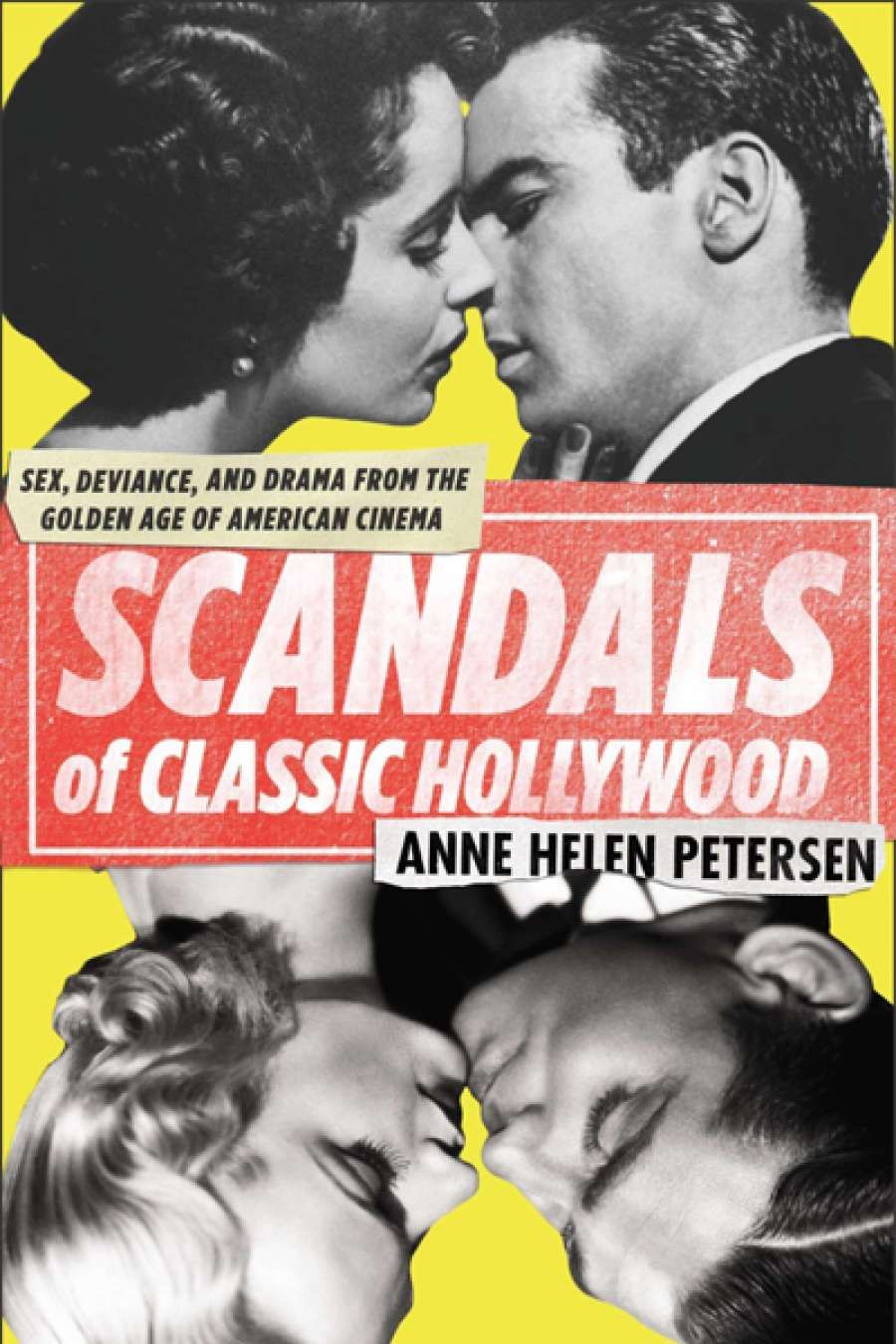
- Free Article: No
- Contents Category: Film
- Custom Article Title: Eloise Ross reviews 'Scandals of Classic Hollywood' by Anne Helen Petersen
- Book 1 Title: Scandals of Classic Hollywood
- Book 1 Biblio: Plume, $19.99 pb, 303 pp, 9780142180679
The book opens its six short sections in the 1910s – ‘the twilight of the idols’ – when Mary Pickford and Douglas Fairbanks were Hollywood’s reigning couple. With the emergence of scandal surrounding them came ‘the emergence of techniques to manage it’, and this pattern follows; the stars in this book were victims of a system that was indifferent to the personal needs of its human products. Petersen traces the ways in which Jean Harlow navigated her sexual persona, the mythologisation of Carole Lombard and Clark Gable’s supposedly perfect coupling, and the way that Lauren Bacall and Humphrey Bogart’s ‘May–December romance’ was normalised by the studios who realised that the stars’ romance was a valuable asset. Once cast in any role in the public eye, a star is doomed or blessed to play that forever: ‘There are heroes and villains, with very little gray area.’ Fatty Arbuckle was an early victim of this ideology. Mae West is another pitiable figure who was unable to separate herself from her onscreen persona.
 Clark Gable and Carole Lombard with her mother, Elizabeth Peters, after the film stars' elopement in 1939 (Acme News Photos)
Clark Gable and Carole Lombard with her mother, Elizabeth Peters, after the film stars' elopement in 1939 (Acme News Photos)
The major Hollywood studios employed ‘fixers’, ‘the hidden yet essential cogs in the star-making machine’ who assisted studios in maintaining a star’s cohesive image built around a sanitised narrative. Their role was to cover up things like substance abuse, unwanted pregnancies, sexual pecadilloes, violent outbursts, and even accidental homicide. While studios attempted to suppress conflict, reporters knew that ‘everyone loves a feud’ – feuds sell. For all the enthusiasm about celebrity and glamour, this book tells an ultimately sad tale. Gossip culture, both sycophantic and vengeful, is blind to its own flaws. It is cannibalistic, constantly devouring the very thing it celebrates.
‘It is cannibalistic, constantly devouring the very thing it celebrates’
Petersen’s writing is sharp, though sometimes repetitive. Her exuberant approach to her subject matter can result in clunky prose. Vivid attention to the star persona is one of Petersen’s strengths, and is sustained throughout the profiles. Of Carole Lombard’s image in 1936, she writes that it ‘finally consolidated into something spectacular, equal parts sophisticated beauty and madcap playfulness’. One of the most cogent studies contains the least amount of scandal: the final section comprising chapters on Montgomery Clift, Marlon Brando, and James Dean. Petersen admits that none of their actions was particularly scandalous, but ‘rather, their images were scandalous’ because they refused to exalt themselves to the ideology of stardom. Framed as rebels but refusing to participate in such mythologisation, the youthful images of these three men contributed to the breakdown of conservative masculinity and the formation of a different kind.
These are not necessarily new revelations, and Petersen occasionally falters with material and anecdotes that are overly familiar. But it is through the introductions to each section, where she engages deeply with a thematic and historical analysis, that her book is most useful. The introduction to section five, ‘Broken by the System’, traces the years following World War II through the careers of two Dorothys – Dandridge and Judy Garland – when the veneer of a perfect Hollywood began to crack (‘the studio itself was revealed as a factory, its workers miserable, overworked, and broken’). This was a phase that changed not only the way stars were perceived but the way they behaved, and that finally made studios somewhat accountable for their actions.
Many behind-the-scenes books about Hollywood are confined to a single decade. That Petersen’s focus is spread over six is both a strength and a weakness. As an overview of the studios’ approach to their stars and the evolving purpose of gossip, the broad timeline is necessary. But the format is episodic for such a brief book. Despite the collation of materials, much is left out. Clearly, there is more to be told. Petersen is an engaging, eloquent storyteller, so there should be more tales ahead.


Comments powered by CComment